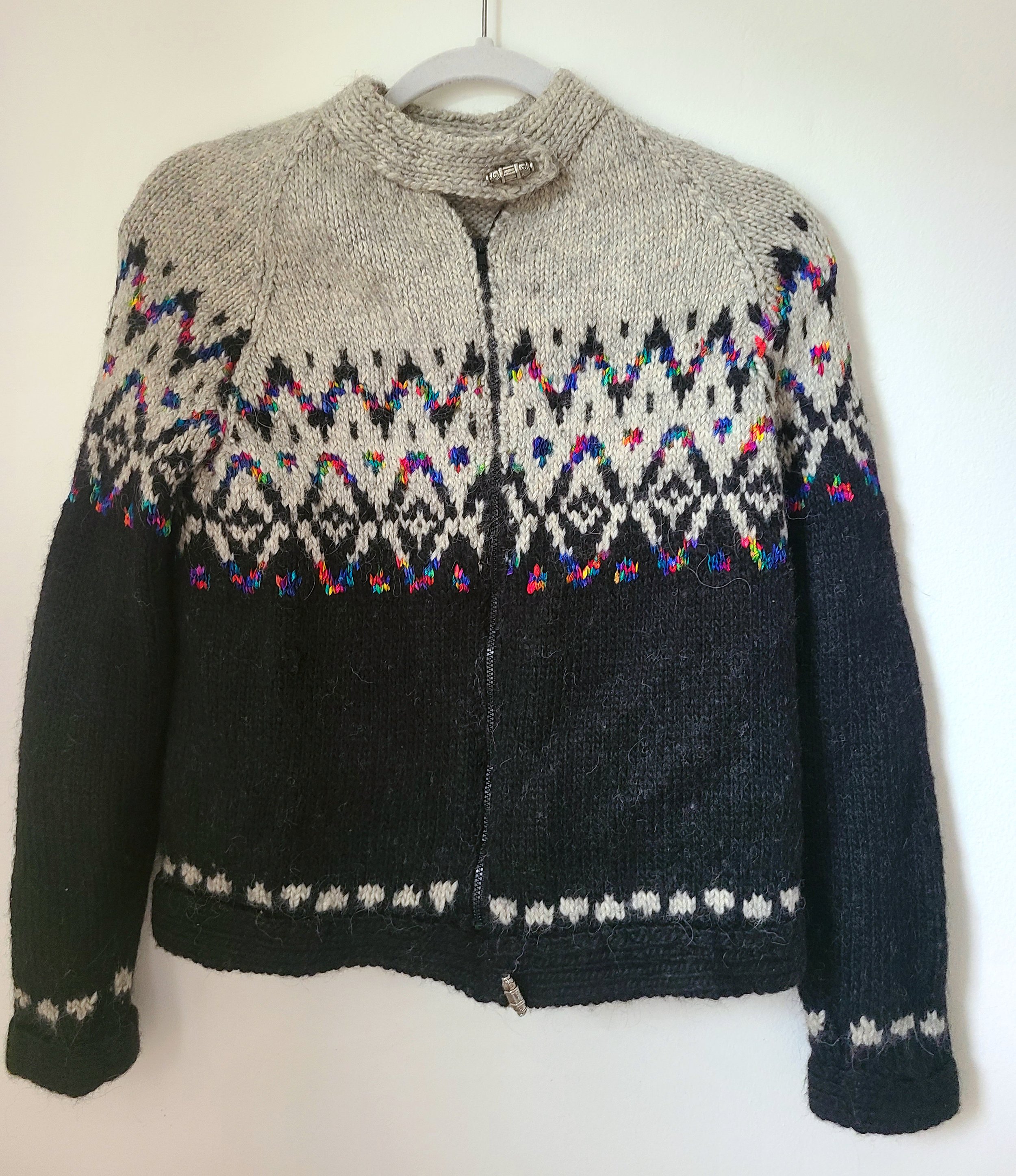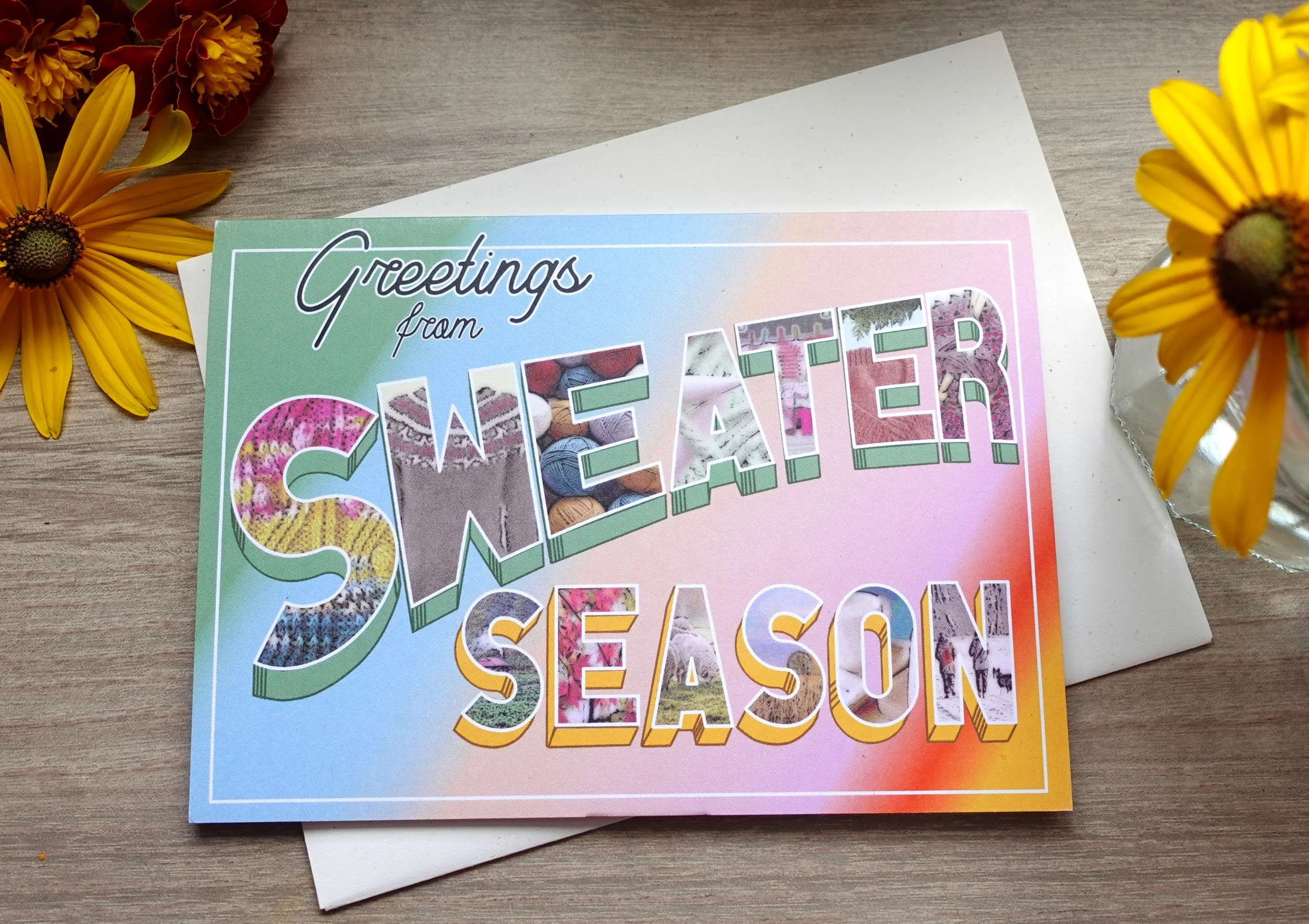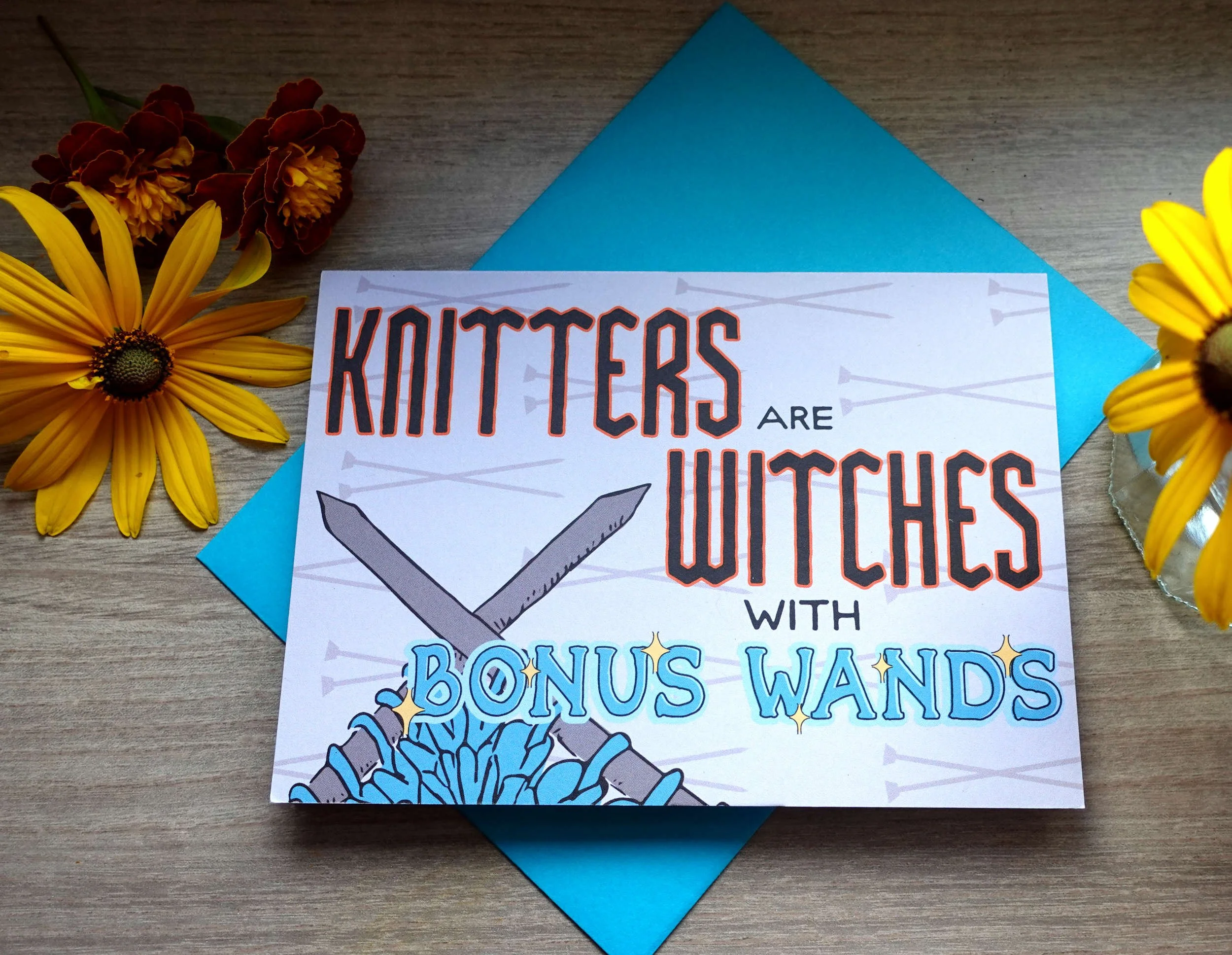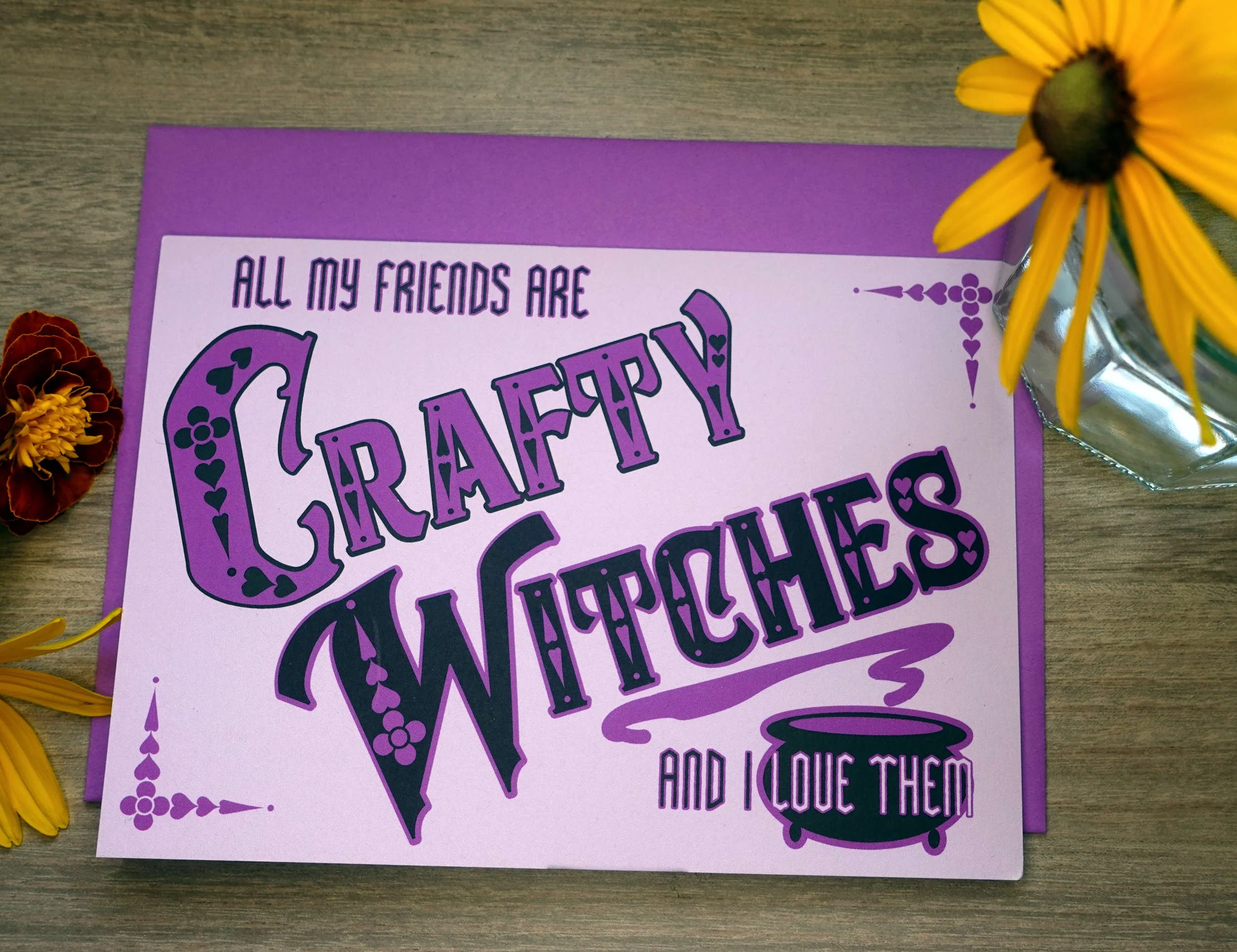The FOlio: My First (but really, Second) Sweater
In the FOlio, I reflect on a finished knitting object and what the process of knitting it taught me.
Pattern : Fair Isle Cardigan from Vogue Knitting Winter 2004/05 (you can still buy it directly from the designer via Ravelry)
Designer: Veronica Manno (Ravelry portfolio)
Yarn Used : Bulky/heavy worsted weight alpaca in black and white (brand unknown), Lion Brand Incredible in Rainbow (now discontinued)
Knit from : Winter 2004-2005 ish
Lesson: Sometimes you just have to frog and pick a new pattern.
Come with me on a journey to pre-Ravelry and smart phones … if you dare. I’m joking, but this FOlio is going to be missing a few details, as it was so early in my knitting days I hadn’t learned why it’s useful to keep records of your knitting projects and yarn stash (and there were no easy internet tools with which to do so anyway). I can’t even search back in photos easily because this was when I was still using a non-internet connected camera and only taking photos that I wanted to purchase as physical prints. I guess the side lesson of this FOlio is just how much technology has changed the way I manage my knitting projects in the last 20 years.
We begin in the fall of 2004. In the spring, I finished grad school, got a job, and moved into my first real adult apartment in Bensonhurst, Brooklyn. (Yes, 20 years ago on an entry level university admin salary you could actually afford a one-bedroom apartment in Brooklyn even if it was much closer to Coney Island than to Manhattan.) With my first regular full-time paycheck, I did allow myself a couple of fun purchases, one of which was a subscription to Vogue Knitting. I had been knitting for a few years at that point, mostly hats, scarves, and a couple of easy blankets for wedding presents, but I wanted to explore more challenging patterns and learn some new techniques – and back then magazines were the best way to do that.
My first VK issue was the Winter 2004/2005 issue and I was instantly hooked (to be fair, it was a truly great issue – there’s a pair of mitered square pants knit in Koigu that I *still* have on my potential projects list). The first thing I knit from that issue was a pair of over the knee colorwork socks (only my third pair of socks ever), which I promptly wore under my pants during snowy winters for years. And perhaps the success of that project made me a little too overconfident, because the next pattern I decided to tackle was this one:
I would have worn this with pants, though.
This is a jacket designed by Anna Mishka. I was struggling to build a professional wardrobe (particularly for cold weather) and loved the idea of knitting myself a cozy work-appropriate jacket. So one September evening after work, I hiked across the East Village to a yarn shop on Avenue A for the very first time (I don’t remember the name, but it didn’t last much longer in that location), and purchased black and white bulky weight alpaca for this jacket.
I knew just enough about knitting math to substitute one type of yarn for another (the pattern called for a Stacey Charles/Takhi yarn), but I was years away from learning about grist or the differences in substituting one fiber for another. I also didn’t yet do gauge swatches and hadn’t realized that I was a very tight knitter; my dumb luck thus far had always resulted in finished objects that fit just fine. Also if you looked closely at the photo you might realize that this was knit in linen stitch, which has much less stretch than a stockinette garment, something I also didn’t know at the time.
I think you can all guess what happened next: I diligently worked through the pattern for the next few months and even sewed it all together (minus the buttons and the pocket) and then discovered that it was far, far too small. What’s more, I knew that to knit a larger size I’d need more yarn, and I wasn’t sure I wanted to buy more (a sweater quantity was a real splurge in those days). But I also wasn’t about to waste my first purchase of “fancy” yarn shop yarn, so I set about frogging the entire project and started flipping through the VK magazine to see if there was anything else I could knit with that yarn. And I hit on this one:
This pattern is by Veronica Manno, and the fact that it was primarily two colors of about the same yardage as I had available was a big part of its appeal. I also discovered that my alpaca yarn was listed as “Heavy worsted/bulky” on the label, which made me hope that it would work okay as a substitute for the worsted yarn called for in the pattern. Yes, I very well could have been heading for disaster again, but this time, it worked – although it did result in a very very dense fabric (this is truly more of an outdoor jacket than an indoor sweater).
But what about that third color of yarn needed for the fair isle section? At the time I had recently impulse purchased some of Lion Brand’s then-new Incredible ribbon yarn. I would actually go on to make a summer top out of it later, but I found myself wondering how it would work as a contrast to the fluffy white and black alpaca. Incredible is listed as a bulky weight yarn itself so I didn’t run into any massive gauge differences.
I did run out of black alpaca *right* at the end of the sweater – if you look very closely you can tell that the very tip of the bottom band is a slightly different black. I also had a lot of trouble getting the zipper sewn in. But when I finished it, it actually fit and I could wear my very first adult sized sweater.
Years of being folded in storage has actually flattened this out a lot, but you can still see a wave in the zipper when it’s closed.
It’s so small across the shoulders that it doesn’t really hang right on a hanger. (This was for the photo only.)
This sweater is very warm. Because I knew nothing about installing a zipper correctly on a handknit (it’s very wavy when closed and about an inch short of the top) it looks better unzipped, but it’s still so chunky that it’s only appropriate for below 20 degree temperatures or as an outside jacket. But to this day, I love the way the ribbon yarn makes the entire design pop. Unfortunately I am not even close to the size I was at 24, so I haven’t been able to wear it for years. A couple of the teenage girls in my family are considering colleges near Chicago though, so perhaps I’ll pass it along if they need some warm outerwear!
It would be a few more years before I understood gauge and yarn substitution well enough to realize what had gone wrong with that first jacket, and that I got pretty lucky that the replacement pattern worked as well as it did. But successfully switching gears when the first sweater was a total failure hooked me on knitting for life – there are so few crafts out there where you can attempt a project this major and be able to just try again with the same materials if it doesn’t work out. This experience made me a knitter who wasn’t afraid to try new things and that meant that a few years later, when knitting patterns and information became more readily available online, I was ready and willing to tackle any interesting looking technique I could find.
What have you learned since knitting your first sweater? Have you ever had to completely frog a completed project and pick something else? Tell me about it in the comments!
Never miss a blog post - sign up for the newsletter and get a monthly digest of recent posts straight to your inbox!










I’m Whitney, a tech editor, graphic designer, and lifelong crafter. Join me for an exploration of my latest knitting, crochet, sewing, and upcycling projects, tips on knitting technique, editing tips for knitting designers, and more!